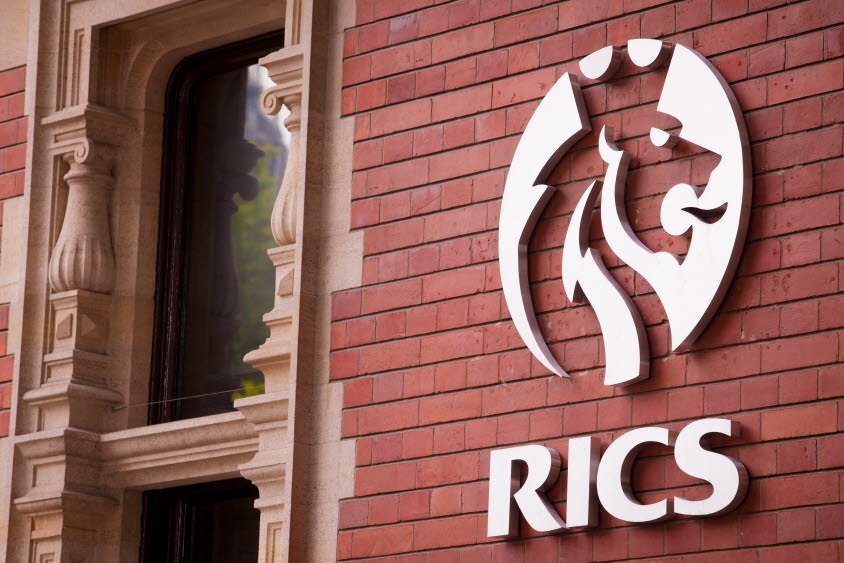RICS Building Surveys Level 3
- Home
- RICS Building Surveys Level 3
Confusingly, it is sometimes still referred to as a Structural Survey. The RICS Home Survey Level 3 is the most detailed property inspection and report that you can get from a member of the Royal Institute of Chartered Surveyors (RICS). It is also known as an RICS Building Survey.
RICS-regulated property surveys save you money when buying a property in Canterbury. An RICS building survey tells you the faults with the property and the repairs needed to bring it up to standard. Knowing the condition of the property allows you to set a fair price and purchase with confidence.

What is an RICS Building Survey?
Often referred to as a “Full Structural” or “Level 3 Survey”, it is a comprehensive, in-depth, and detailed visual inspection of the property, its structure, and any conditions affecting it.
All areas of the building (anywhere that is “accessible”) are scrutinised. Anything not accessible (e.g. an area locked away) would not be included.
Prominent defects would be described by the building surveyors. They will also talk about the visible problems that might not be so big but might cause a reasonable person to think twice. They will use their reasonable, professional judgment to tell us if those problems are evidence of something more seriously amiss, something that’s not so visible.
If your property is large, old, in disrepair, or otherwise unique, it is especially advisable to conduct this sort of survey. A Full Building Survey is also recommended if you intend to make any substantial changes to the property, like renovating or extending it.
Should I get a Building Survey?
At Canterbury Surveyors, we hold that RICS Level 3 surveys are the best type of survey to choose if you want to gain a thorough understanding of the property you are buying, no matter its age or style.
A custom building survey gives advice on the type of construction and the condition of the building, its structural safety, and what needs to be repaired. Our panel of RICS surveyors gives a detailed inspection of the building. They inspect the entire accessible building, including the roof space, under the flooring (if there is a basement), and every visible area inside the building.
If a house has survived for decades, why would it need a survey?
All houses need some care, and there’s no telling what previous owners might have done (or not done) to your future home. Damp could have been painted over; timber decay could have been left to fester; cracking damage may have been newly decorated over.
Is an RICS Home Survey Level 3 (Building Survey) appropriate?
Although many homebuyer reports can be modified to fit your particular property, a Full Building Survey is well suited to “Listed” buildings, properties built before the turn of the 19th century, or to other types of unusual construction (e.g. timber framed properties).
So, if you’re contemplating the purchase of a period property that’s expensive, strange, or large (e.g. a mansion), it makes sense to have a survey of this sort conducted.
The surveyor who does carry out this type of inspection and is familiar with such properties is more likely to spend time and energy on certain common problems that tend to crop up, whether now or in the future.
Building Survey Report Recommendations
You will get a report with guidance not only on visible faults but also on possible hidden defects. It specifies the kinds of repairs that are needed, the maintenance the property requires, and key environmental hazards. It may also pinpoint matters for the attention of your legal advisor (like possible planning issues).
The information will be thorough, pertinent to the property in question, and pitched to your level of understanding. If you ask either an RICS Chartered Building Surveyor or a Structural Engineer to report on the condition of a property, you will find, especially with the former, that the results are framed in a way comprehensible to the general public (i.e. Plain English).
The following information comes from the Full Building Survey report. It covers the main elements of the survey and their purpose:
- Examination of all accessible parts of the main building and outbuildings
- Assessment of major and minor faults and their implications
- Speculation on potential hidden defects
- Structural review of the property (including timber and steel framed properties)
- Checking of services (gas, electricity, hot water, heating, etc.)
- Description of construction materials (damp proofing, drainage, and insulation)
- Testing of damp in the floors, ceilings, and perimeter walls
- An optional re-instatement cost build and market valuation on request (add-on service).
Comparison of Full Building Survey with other survey types:
A Building Survey is the most detailed type available and is most suitable for older and larger homes or those which have been significantly altered. It is much more comprehensive than a Homebuyer Survey and provides a lot of detail. Because of this, the cost will be higher than other survey types.
Structural Engineer Report v Building Survey
Either an RICS Chartered Building Surveyor can assess the condition of a property for you. Usually, a building survey covers the property, but when you have an individual concern about a structural defect, you might request an additional report by a structural engineer for that specific issue (such as the chimney).
First Time Buyer Survey Canterbury
If you are buying a property for the first time, a building survey from your surveyor will explain any technical structural issues in plain words.
What does a Full Building Survey cover?
Here is a list of what you will find in the full report:
- Inspection of every inside and outside part you can access in the main building and additional buildings
- assessing both major and minor faults and understanding what happens as a result.
- commentary on more hidden defects
- examining the structure of the property, as well as the timber within it
- checking the services that provide gas, electricity, hot water and heating
- information on how dampness, drainage and insulation materials are used in the construction process
- inspecting the floors, ceiling and all walls near the outside for dampness
- customers have the option to include reinstatement cost build and market valuation by request
What’s the main difference between a Homebuyer Survey and a Full Building Survey?
You can expect the surveyor to examine defects and suggested repairs more thoroughly in a Detailed Survey than in a Homebuyer Survey. A Full Building Survey provides detailed descriptions of existing conditions as well as repair approach and related expenses. Survey costs are influenced by how old, how big and how valuable the property being surveyed is.
What will the Building Surveyor look at?
The visible building parts are what your surveyor will look at. They will do a visual inspection of the construction. “Visible” means what can be seen and accessed.
The Home Survey Report shows you visible defects and potentially some hidden ones that are potentially hazardous.
What constitutes a Building Survey Report?
A survey isn’t just an inspection; it’s a detailed study of the property.
All accessible parts of the property and its outbuildings are examined to find the major and minor defects. In a level three survey, the most comprehensive kind, the surveyor may kneel to see beneath an accessible roof overhang, or sometimes work from above, using a cherry picker or scaffolding to get up close to roof components, especially where they might be leaking or generating other kinds of building-envelope trouble.
Condition Ratings in a Building Survey Report
Surveyors often recommend solutions for repairs and they are required to outline an expected completion time. Would include information on condition: what’s urgent, what’s weakening or the places that are currently strong and without defect.
Legal Information in Building Surveys
They will talk through the consequences of owning the property such as nearby roads and public paths and anything added to a Conservation Area, depending on what you ask about.
RICS Valuation and Reinstatement Costs
You might consider having a market valuation performed to determine if the property is worth the asking price.
You will definitely need a reinstatement valuation for insurance purposes, which is performed by an insurance company or a qualified individual who can accurately gauge what it would cost to rebuild your property if it were damaged or destroyed.
Building surveys are inherently tied to understanding the value and costs associated with the property; however, they also inform you about the condition of the property and any repairs that may be necessary in the near future.
Who should have a Building Survey?
Guidelines in the industry suggest inspecting big, old or distressed property by doing a survey.
It’s also a good idea to have a building survey done if you are considering major renovations or additions to your property.
Should I obtain a Home Buyer Survey?
Modern houses that are in fair condition and are built using standard construction techniques still require a Home Buyer Survey at the very least.
If you’re more interested in the visible defects and potential hidden defects that your property surveyor thinks might be present, then the Home Buyer Survey is what you want. If you simply don’t want to take any chances at all and you’re happy with paying slightly more, then go for the Full Building Survey.
The HomeBuyer Report and Full Building Survey both explain the nature of the required repairs and the order in which they should be completed. They also describe what kind of ongoing property maintenance will be required.
Homebuyer Report v Full Building Survey
A Full Building Survey is designed especially for the property in question and provides guidance on faults your surveyor discovers and thinks may exist. You see examples of what has been recovered from the site by each photograph.
Both the Home Buyer and Full Building Survey reports indicate what repairs are required, in which sequence and the necessary upkeep for the property.
Is a Valuation included in a Home Survey?
Reinstatement costs and market valuations are included in a HomeBuyer Report but not a Full Building Survey. This is because a Full Building Survey is more focused on the condition of the building as opposed to the HomeBuyer Report.
You can, however, get a building survey that includes a valuation. If you get a building survey that includes a valuation as an add-on, you will be in a better position to negotiate the purchase price.
Canterbury Case Study
The surveyors recently completed an RICS Home Survey Level 3 (RICS Building Survey) in Canterbury, complete with a reinstatement estimate.
They used their localised knowledge to give valuable and tailored advice to the homeowners and property purchasers about the unique quirks of houses in the Canterbury area. Townhouses in Canterbury have seen some very healthy growth over the last few years, and it’s worth remembering that property prices across the UK have naturally risen in tandem.
The property was approximately 60 years old, built as a 5-bedroom, detached house around the 1960s. We didn’t find anything requiring urgent attention; however, we did come across a number of items that fall under minor defects or area opportunities for improvement. Some of the first items we cover do reflect a fairly broad area of opportunity, such as insulating the pipes; uPVC windows and doors; and other items that pertain to security and fortification of the house against intruders and against weather events (more on that in a moment).
In some cases, work needs to be done that can be characterized as “maintaining the house as a comfortable and functional place to live.” However, the full spectrum of opportunities for improvement the surveyors pointed out in this report covered items to make the property more “secure,” and to reduce the chances of damage from adverse weather.
Chartered Surveyors and Engineers in Canterbury
We have a panel of competent Chartered Surveyors who carry out thorough surveys. They are all members of Chartered Institute of Building (CIOB), Residential Property Surveyors Association (RPSA), and/or the Royal Institution of Chartered Surveyors (RICS) or other industry-standard regulator.
Suppose you have a structural issue at your property that needs surveying. In that case, we have a panel of Chartered Structural Engineers who will investigate it and produce a report.
Whether you have a survey carried out by one of our competent Chartered Surveyors or a structural investigation carried out by one of our Chartered Structural Engineers, you can be assured both reports will be totally independent.




